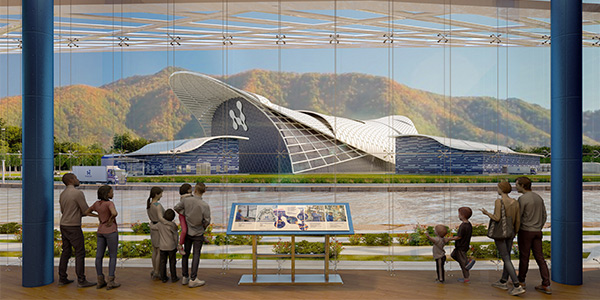Small, dispersed reactors are the nuclear industry’s best chance at future success and can forge a quicker path to zero-carbon electricity portfolios, one nuclear energy policy expert told her audience Tuesday.
Carnegie Mellon University researcher Jessica Lovering said the industry is making strides on small modular reactors (SMRs), light-water reactors, molten salt reactors, helium-cooled fast reactors and micro reactors. Those advancements could prove a renaissance for the nuclear industry, she said during a webinar on advanced nuclear technologies hosted by environmental policy nonprofit Resources for the Future.
Lovering said the first-ever small modular reactor is close to commercialization. Portland, Ore.-based NuScale Power’s SMR design last week passed the U.S Nuclear Regulatory Commission’s final review for design certification. NuScale said customers can now proceed with plans to develop their power plants. (See NRC OKs NuScale’s Small Modular Reactor Design.)
Micro reactors have much longer core lifetimes that can operate up to 30 years between refueling, Lovering said, and some advanced technologies come equipped with a lifetime core.
Other reactors can be designed so that the cores are already fueled when shipped from factories, Lovering said. When those reactors reach the end of their lifespan, she said, they can be packaged and sent back for either refueling or decommissioning.
“You ship the whole reactor back, and that’s good for communities that don’t want to deal with the whole refueling and decommissioning process,” she said. “This can really open up new markets in communities. … The waste won’t sit on site. It’ll go back to a central facility. Of course, that still leaves what the central company will do about disposal.”
Lovering said there’s much research and development on waste disposal and processing that is yet to be tackled.
Most small reactors have sealed cores to prevent access to the nuclear material, minimizing the risk of accidents or terrorism, she said. Lovering also said molten salt retains its liquid form even at very high temperatures, minimizing explosion danger.
“It’s really going to be up to proving the safety case to the regulators,” she said.
Lovering said nuclear capacity has stagnated in the U.S., hovering around 20% of generation since the 1990s. That share is at risk of retirement as electrification boosts energy demand, she said. More nuclear capacity should come online beyond the two plants under construction in Georgia, she argued.
The International Energy Agency estimates that global nuclear capacity needs to double by 2050 to meet aggressive carbon-reduction goals.
“Some of the big obstacles to building new nuclear … are really high cost and long construction times,” Lovering said. “They’re too big and expensive for deregulated markets.”
She said it’s no surprise that the only two new plants in construction, Georgia Power’s two additional units at Plant Vogtle, are in the regulated southeastern U.S. The Vogtle expansion has nearly doubled in price from the original $14 billion the Georgia Public Service Commission approved more than a decade ago. Last week, Georgia Power told the PSC that the project is on schedule, with the first unit set to go online in November 2021 and the second to follow a year later.
Lovering also noted that some states have moratoriums on new nuclear generation until the national waste disposal problem is addressed.
Communities with coal-fired plants set to retire in the next decade could be an ideal fit for a small nuclear reactor placed on the plant’s site, Lovering said. That would retain some jobs, she said, as even small, dispersed nuclear reactors will need staff.
“You can take advantage of the existing coal plant site and power lines,” she said, adding that some coal plant employees could be retrained to staff the reactor.
Micro reactors can also be installed to provide emergency services on existing grids, keeping hospitals and other essential services running in a blackout, she said.
Lovering also said it’s important to prolong the operation of existing nuclear plants for as long as they are safe and not let economic forces compel early retirements. She said as nuclear plants are decommissioned before their useful life ends, they lose their spot in the public consciousness as a viable option for zero-carbon energy resources.
“It’s a real shame to close any of them early. What we see is when they’re shut down, they’re often replaced with natural gas,” she said.
Lovering said the Nuclear Energy Leadership Act, introduced in Congress last year, could spark more industry growth. The bill would provide funding for two advanced nuclear reactor demonstration projects by 2025 and up to five such projects by 2035.
Talk of a Green New Deal in Congress has fostered an openness to new nuclear capacity, she added.
“That’s really driven by the reality on the ground,” Lovering said, noting that wind and solar generation continue to have a variability problem that needs solving.





